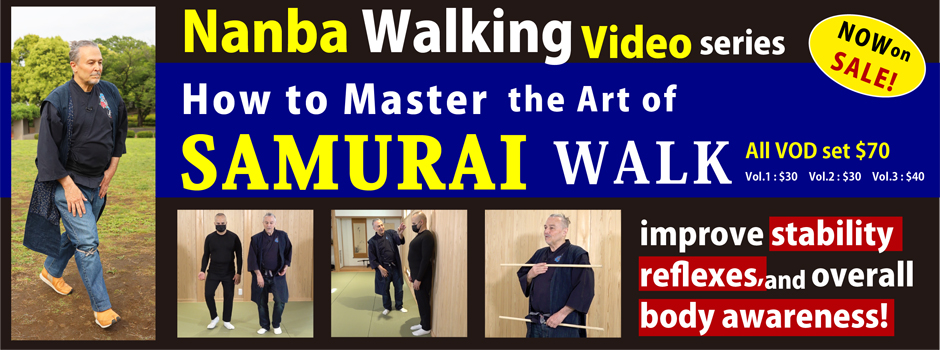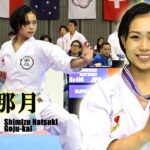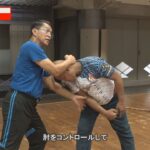How to Master the Art of SAMURAI WALK Vol.5 【Nanba Accessories: the Art of Demonstrating Nanba】
Here we demonstrate using everyday objects as accessories to access the power and wisdom of the body. These accessories have visible results and can be used to demonstrate the effectiveness of Nanba. I shares personal experiences of using these accessories on dogs, children, and elderly individuals, all of whom have shown positive results without prior explanation. The speaker introduces various accessories such as a cord called “himo,” an adjustable headband-like device, a belt or string tied around the abdomen, a Japanese hand towel, and dowel sticks of different lengths. These accessories can improve stability, reflexes, and overall body awareness. I encourage you to practice using these accessories and explore their benefits.
Nanba Accessorie: Tassuki
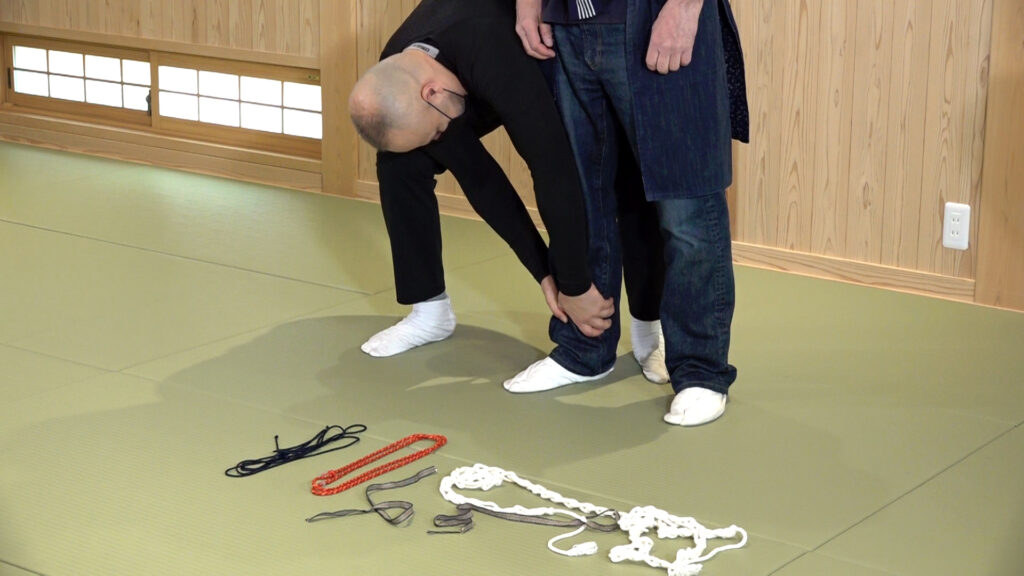 Japanese Himo or Cords come in various forms. The most convenient is called Himo Tore Cord, because it comes with an adjustable silicone fitting that makes it easy to adjust the size, and comes in attractive colors. They are available from MARUMITSU at https://m-bbb.shop-pro.jp/?mode=f14&gad_source=1&gbraid=0AAAAADpek2BloyTQOX3C1wU3X3tS90tsR.
Japanese Himo or Cords come in various forms. The most convenient is called Himo Tore Cord, because it comes with an adjustable silicone fitting that makes it easy to adjust the size, and comes in attractive colors. They are available from MARUMITSU at https://m-bbb.shop-pro.jp/?mode=f14&gad_source=1&gbraid=0AAAAADpek2BloyTQOX3C1wU3X3tS90tsR.
If you have the patience to create a cord with a chain link knot, this can be particularly effective. But any cord will do, as long as you do not tie it too tightly. Leave enough room for your thumb to fit under, and it should be loose enough to be barely felt. It can be tied around your forehead as a headband, made into a figure 8 and worn like a sweater so that the cords go over your shoulder and cross in back. It can be worn like a belt around your waist. Or it can be tied just below the kneecap. You get the same results whichever way you tie them.
Nanba Accessorie: Obi
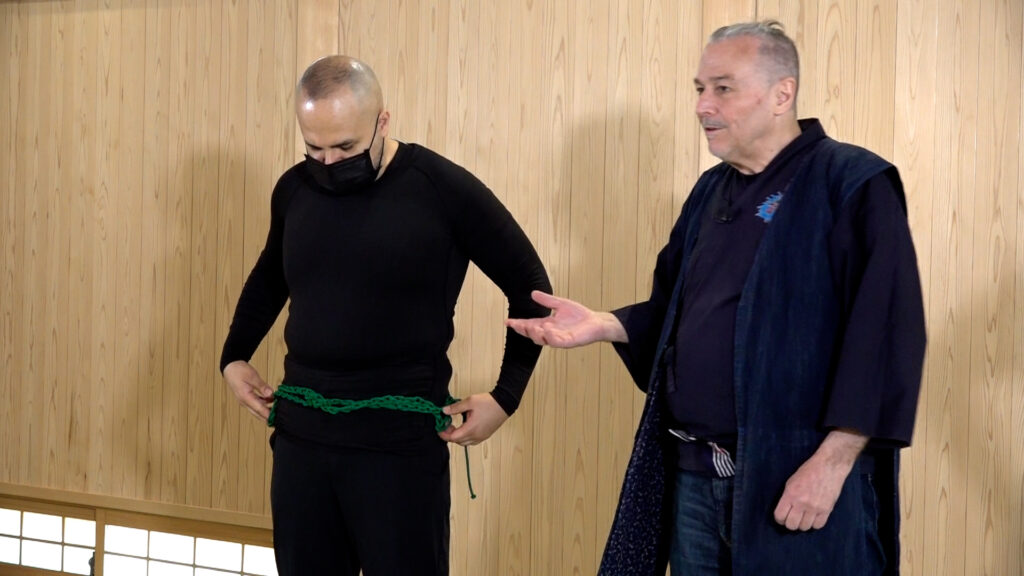
Nanba Accessorie: Tenugui
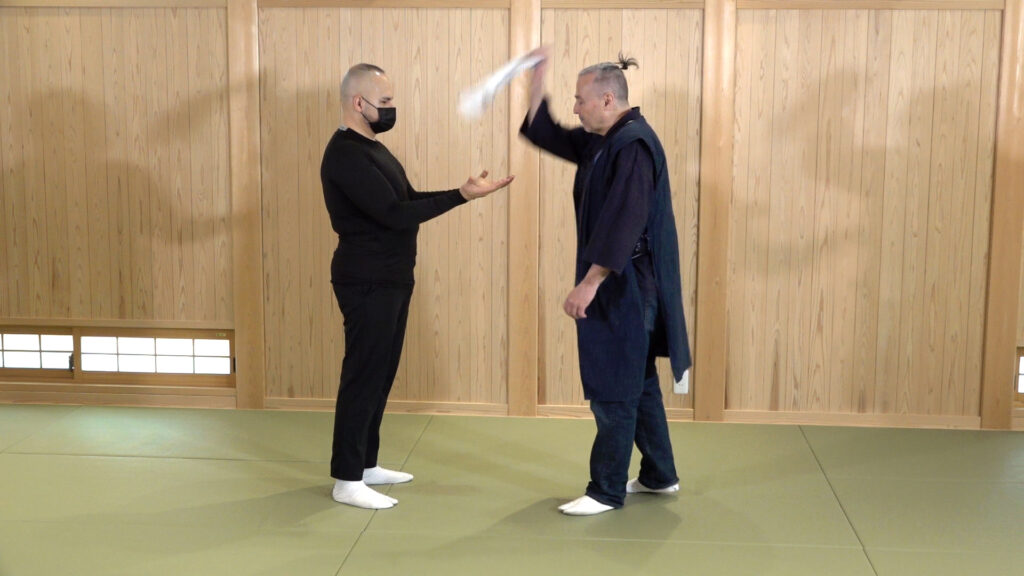 In this case the cord is tied round the waist like a martial arts belt. Have your partner hold the tenugui hand towel with fingers open and palms up. Without using the cord it is very difficult to take the towel away with your hand from below. However if you wear the cord in the manner shown in the video, then it becomes surprisingly easy to take away the towel. It is almost as if you are coming in under the radar.
In this case the cord is tied round the waist like a martial arts belt. Have your partner hold the tenugui hand towel with fingers open and palms up. Without using the cord it is very difficult to take the towel away with your hand from below. However if you wear the cord in the manner shown in the video, then it becomes surprisingly easy to take away the towel. It is almost as if you are coming in under the radar.
Nanba Accessorie: Hizamaki
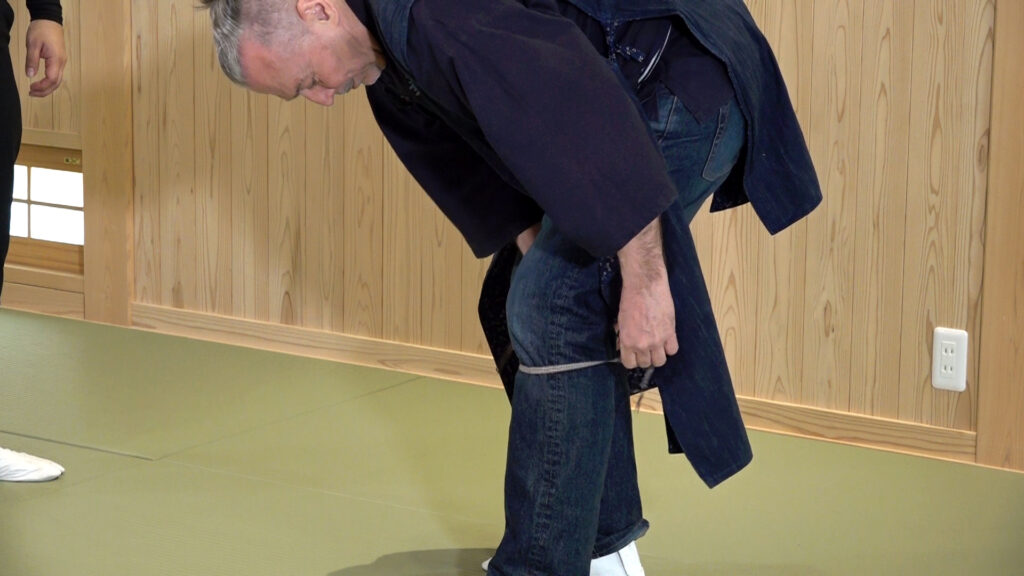 Here we show how to tie the cord around your leg under the kneecap. This has a surprising effect in engaging your Nanba Walk, as if it somehow regulates your speed or forward lean, and helps you remain erect as you walk.
Here we show how to tie the cord around your leg under the kneecap. This has a surprising effect in engaging your Nanba Walk, as if it somehow regulates your speed or forward lean, and helps you remain erect as you walk.
Nanba Accessorie: Sticks
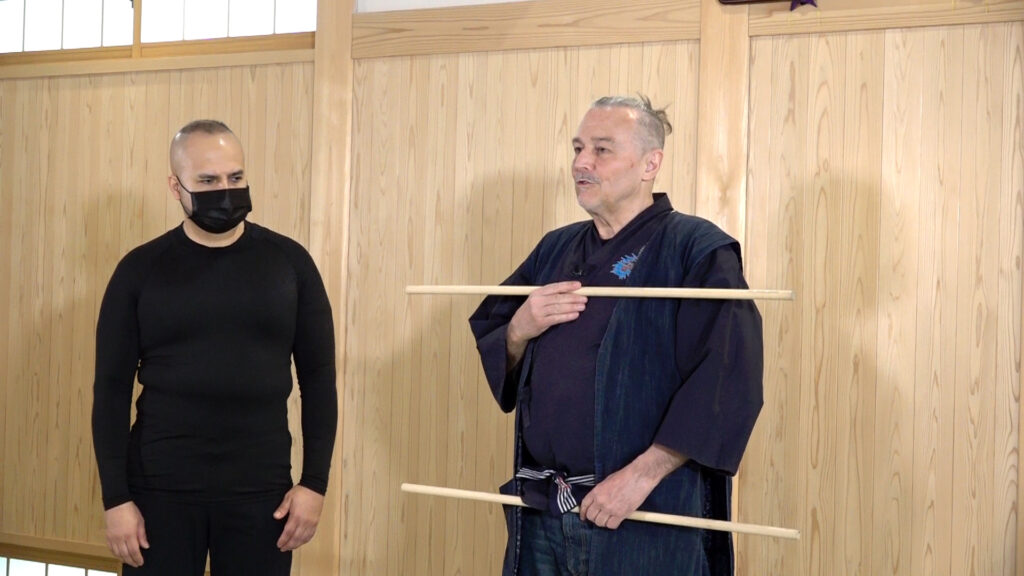 The pole can be used the exaggerate the shoulder line, making it obvious if your are walking smoothly or swaying side to side as you walk. This is even more evident if you use two wooden poles, one at shoulder height and the other at hip height. The poles should remain parallel, and one should stay on top of the other when seen from above. Let the poles maintain the parallel position as you walk without twisting your shoulders or hips.
The pole can be used the exaggerate the shoulder line, making it obvious if your are walking smoothly or swaying side to side as you walk. This is even more evident if you use two wooden poles, one at shoulder height and the other at hip height. The poles should remain parallel, and one should stay on top of the other when seen from above. Let the poles maintain the parallel position as you walk without twisting your shoulders or hips.
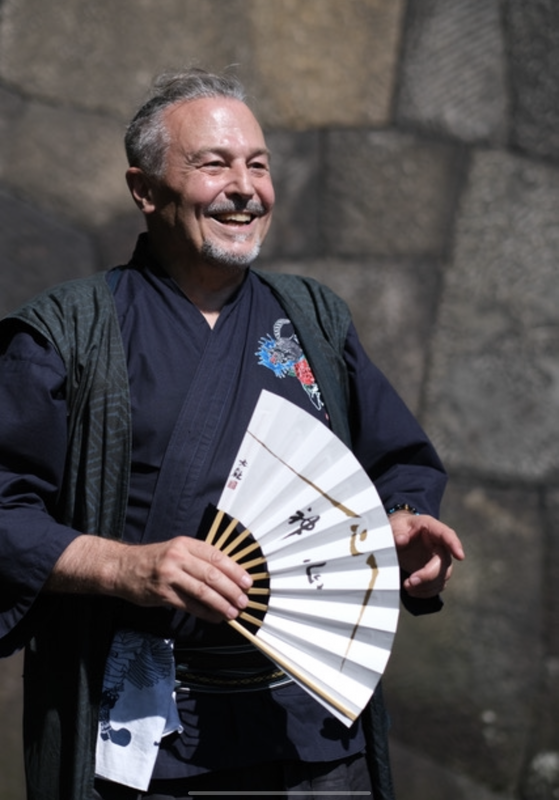 William Reed
William Reed
Born in the United States, William Reed is a long-time resident of Japan, and is currently a Professor of Japanese Culture at the International College of Liberal Arts (iCLA) at Yamanashi Gakuin University. He holds a 10th-dan in Shodo from the Zen Nihon Shodo Rengokai, and is a Headquarters appointed Vice Chairman of the Japan Calligraphy Education Association. He holds an 8th-dan in Aikido from the Aikido Yuishinkai. He holds a Tokubetsu Shihan rank in Nanba, the Art of Physical Finesse. He is aiso Certifed as a shihan in WAGI, a health method based on traditional japanese Kyogen theater, shown to extend years of a healthy lifespan. Director of the International Committee for the Mugairyu Hogyokukai (2nd-dan). A regular commentator on Yamanashi Broadcast Television Tetete TV, Navigator for NHK World Journeys in Japan, numerous documentaries, and has appeared on the long running Sekai Fushigi Hakken (Discover the World’s Mysteries). Certified in 2009 by World Champion of Public Speaking Craig Valentine, he has written a bestseller on this in Japanese 世界最高のプレゼン術 (Kadokawa Books, 2014). He is also author of Song of the Brush Dance of the Ink (Morgan James Publishing, 2022). He appears in the bestselling DVD on Nanba Walking 本当のナンバ歩き, and the DVD on Introduction to Mugairyu Iaido, both published by BAB Japan.
Samurai Walk: Mastery of Sword and Letters:
http://www.samurai-walk.com

